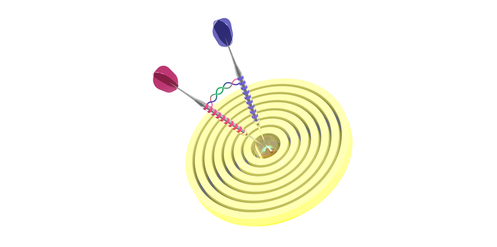A quantum-dot-based device combines all of the attributes necessary for producing a reliable source of entangled photons for quantum information applications.

C.-Y. Lu/ University of Science and Technology of China
Quantum photonic technologies require sources that create entangled, indistinguishable pairs of photons on demand that can be extracted from the source at a high rate. Previous experiments have achieved each of these four criteria individually, or in some combination, but have fallen short of fulfilling them all. For example, the method of creating entangled pairs by splitting a single high-energy photon into two—so-called spontaneous parametric down-conversion—lacks the capability to generate such photons on demand. Now, Hui Wang at the University of Science and Technology of China and colleagues demonstrate a semiconductor quantum-dot photon emitter that simultaneously achieves all the requirements in a single device.
The team illuminated an InGaAs quantum dot with a laser, producing an excited state made from two electron-hole pairs. When this state decayed back to the ground state, it yielded a pair of indistinguishable, entangled photons. The dot was embedded in the center of a circular grating, which functioned as a resonant cavity, enhancing photon emission and directing the entangled photons toward a lens, where they were collected. Using this scheme, the team avoided the disadvantage of other quantum-dot sources, which typically have poor photon extraction efficiency, as most of the photons generated by the dots are lost into the device.
The experiment’s performance is no record breaker by any individual measure. But this device is the first “all-rounder” and, as such, the team says, represents a significant milestone for quantum photonic applications. By refining the setup, the researchers hope to improve its capability on all four fronts, allowing for its eventual use in technologies such as quantum communication networks and optical quantum computers.
This research is published in Physical Review Letters.
–Marric Stephens
Marric Stephens is a freelance science writer based in Bristol, UK.